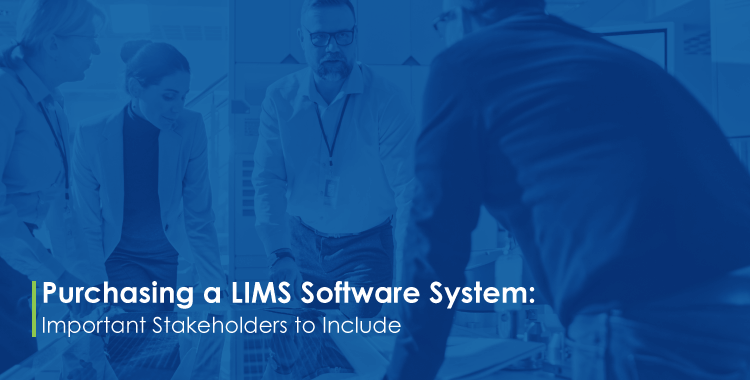Achieving Excellence with LIMS Quality Control
Today, in the rapidly changing lab setting, quality control of LIMS is essential for attaining precise and dependable analytical data. A robust...
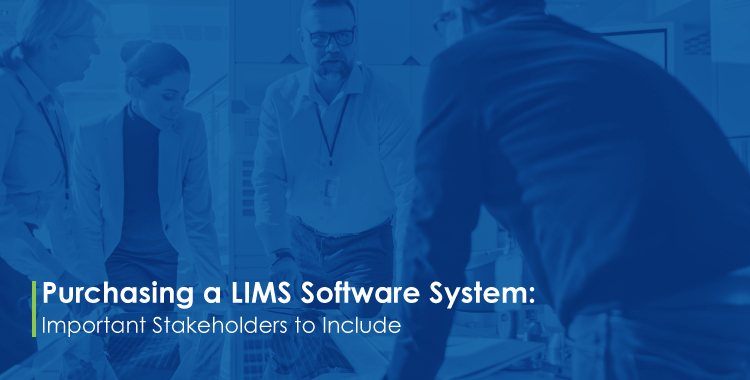
Selecting the right LIMS (Laboratory Information Management System) software is a critical decision for any organization, as it directly impacts laboratory efficiency, data management, and regulatory compliance. In this blog post, we will discuss the importance of involving various stakeholders in the LIMS software selection process to ensure a comprehensive understanding of your organization's needs.
From lab managers to stability analysts and environmental monitoring personnel, each stakeholder brings unique insights into essential features such as multi-location lab management, remote worker accessibility, mobile application integration, sample tracking capabilities and more. Furthermore, we will explore cloud-based LIMS systems that offer reduced IT infrastructure risks while providing scalability for growing businesses.
Lastly, we will delve into vendor demonstrations and evaluate potential LIMS solutions based on their ease of use and the adaptability of out of box workflows. By considering these factors during your LIMS software selection process can help you choose an optimal solution tailored to your specific requirements.
Integrating technology into your laboratory is never a one person decision. It is important to acknowledge different perspectives from all levels right across the organization when considering who needs to be involved in the decision. Involving individuals from various departments and roles ensures that diverse viewpoints are considered, leading to well informed choices and a smoother implementation process.
Stakeholder buy-in not only helps you select the most suitable Laboratory Information Management System (LIMS) for your lab but also fosters collaboration during its deployment, training, and ongoing use. This collaborative approach increases user adoption rates while maximizing the return on investment (ROI).
To promote effective communication among stakeholders throughout the LIMS selection process, consider implementing regular meetings where everyone can voice their opinions about potential solutions. Encourage open discussions and ask participants to provide feedback on the various options. Additionally, consider using a project management software to track progress and facilitate collaboration among team members.
A well prepared requirements document is essential for guiding the LIMS selection process. This document should outline your laboratory's specific needs and expectations from the new system. Brainstorming with stakeholders is a must to ensure all perspectives are taken into consideration when creating the requirements document.
Involving relevant stakeholders in your LIMS software selection process ensures you choose an effective solution tailored specifically to your lab's unique needs while fostering collaboration across departments throughout its implementation and use. By considering diverse viewpoints during this crucial decision making phase, you set up your organization for long-term success.
Having multiple perspectives through the LIMS software selection process is essential for ensuring that the chosen system meets all of the laboratory's needs and expectations. That being said, it is important to consider a Laboratory Manager's perspective on what features should be included when selecting an appropriate LIMS system.
Key Takeaway: Involving stakeholders from various departments and roles is crucial when selecting a Laboratory Information Management System (LIMS) for your lab. This collaborative approach ensures diverse viewpoints are considered, leading to a well informed choice and smoother implementation process while maximizing the return on investment (ROI).
As the individuals responsible for overseeing day to day operations in a laboratory, managers play an essential role in evaluating how new software will impact workflows and overall efficiency. When selecting a laboratory information management system (LIMS), it is crucial to consider their perspective and address specific needs such as multi-location management, remote worker support, and mobile application integration.
In today's globalized world, many laboratories operate across multiple locations. A robust LIMS solution should offer features that facilitate seamless communication between these sites while maintaining data integrity and regulatory compliance. Key functionalities may include centralized sample tracking, automated report generation, and real-time data sharing among different branches of the organization (source). Additionally, advanced analytics capabilities can help lab managers monitor performance metrics at each location to identify areas for improvement.
The recent shift towards remote work has highlighted the need for flexible systems that allow employees to access critical information from anywhere. An ideal LIMS solution should provide secure web-based access or VPN connections so that team members can easily collaborate on projects regardless of their physical location (source). Furthermore, responsive technical support is essential to ensure smooth operation even when users are working remotely.
Incorporating mobile applications into laboratory workflows can significantly improve efficiency by allowing employees to access essential information on the go (source). For instance, barcode scanning can facilitate sample tracking processes while digital notebooks enable seamless data entry directly from the lab floor. When evaluating potential vendors for your LIMS solution, it is vital to assess their ability to integrate with existing mobile technologies or develop custom solutions tailored specifically for your organization's needs.
Laboratory managers have a unique perspective when it comes to selecting LIMS systems, as they need to consider features that will help them manage multiple locations and provide access for remote workers. Cloud-based LIMS systems offer businesses the opportunity to reduce IT infrastructure risks while providing scalability and flexibility in data storage and access.
Key Takeaway: Lab managers play a vital role in selecting LIMS software, and it's essential to consider their perspective when evaluating multi-location management features, remote worker accessibility and support, and mobile application integration. A robust LIMS solution should offer centralized sample tracking, real-time data sharing among different branches of the organization, secure web-based access or VPN connections for remote workers, built in communication tools such as chat functions and file sharing capabilities for collaboration purposes. Additionally, mobile applications can significantly improve efficiency by allowing employees to access critical information on the go through barcode scanning apps or digital notebooks with an intuitive design that works seamlessly across various devices and operating systems.
As laboratories continue to evolve and expand, it is essential to select a Laboratory Information Management System (LIMS) that can support business growth. Cloud-based LIMS systems offer numerous benefits, including reduced risk, increased opportunities for expansion, and flexibility for employees. By involving key decision makers within the company who understand these advantages, you ensure better alignment with organizational goals.
Migrating your laboratory's data management system to the cloud reduces the risks associated with maintaining on premises IT infrastructure. With a cloud-based LIMS solution like LabWare Cloud Services, there is no need to invest in expensive hardware or worry about regular maintenance and updates. The responsibility of managing servers and ensuring data security falls on the service provider, allowing your team to focus on core laboratory operations instead of dealing with technical issues.
A significant advantage of using a cloud-based LIMS system is its ability to scale as your business grows. As new locations are added or existing ones expanded, additional storage capacity can be easily acquired without any disruption in services. Furthermore, adding more users or increasing processing power becomes seamless since resources can be allocated instantly based on demand. This level of scalability ensures that even as your organization expands rapidly over time, you won't have any limitations due to an outdated information management system.
In the modern, dynamic corporate world, it is essential to be able to access vital information promptly. A cloud-based LIMS solution provides users with real-time access to their data from any device with an internet connection. This level of flexibility enables employees to work remotely or collaborate across multiple locations without being tied down by physical infrastructure constraints. Additionally, as regulations change or new ones are introduced over time, your cloud-based LIMS system can adapt accordingly by updating its features and functionalities seamlessly, ensuring that you remain compliant at all times.
Selecting a cloud-based LIMS software not only benefits your organization but also contributes significantly towards achieving long term growth objectives. By involving key stakeholders who understand these advantages during the selection process, you ensure better alignment between technology investments and overall organizational goals.
Cloud-Based LIMS Systems provide businesses with the necessary scalability, flexibility and risk reduction for growth. With this in mind, it is important to consider how a suitable LIMS System can assist scientists when tracking sample history throughout stability studies or generating custom reports based on study results.
Key Takeaway: Cloud-based LIMS systems offer reduced IT infrastructure risks, scalability for growing businesses, ease-of-implementation, cost effectiveness and flexibility in access and data storage. By involving key decision-makers within the company who understand these advantages during the selection process of a cloud-based LIMS software, better alignment between technology investments and overall organizational goals can be achieved.
In the process of selecting a Laboratory Information Management System (LIMS), it is essential to involve stability scientists as they play a critical role in administering stability study samples. Their input during the selection process ensures that the chosen software meets all necessary requirements and provides specific features tailored to their needs. By involving stability analysts, you can guarantee that your new LIMS software will streamline workflows related to stability testing and improve overall efficiency.
A crucial aspect for stability scientists is tracking sample history throughout various stages of stability studies. The ideal LIMS solution should offer comprehensive sample management capabilities, including unique identification numbers for each sample, automatic status updates upon completion of tests or analysis, and easy access to historical data. This level of traceability not only helps maintain compliance with regulatory guidelines but also enables efficient troubleshooting when issues arise.
The ability to generate custom reports based on study results is another vital feature in stability tracking. A robust LIMS system should allow users to create and reference templates for recurring report types such as shelf-life projections or degradation profiles. Flexibility in the formatting of these templates should offer the ability to reference selected data sets while providing various table, charting and graphical visualization options. Additionally, integration with popular data visualization tools like Microsoft Power BI can further enhance reporting capabilities by providing interactive dashboards and real-time analytics.
Involving stability scientists during the selection process guarantees that your new LIMS solution will cater to their specific needs while streamlining workflows related to stability testing. By considering their input on essential features like sample history tracking, custom report generation, and workflow optimization tools, you can make a well informed decision that benefits both your laboratory operations and overall business growth.
Stability Scientists play a vital role in selecting the right LIMS system as they are responsible for tracking sample history throughout stability studies, generating custom reports based on study results and streamlining workflows related to stability testing. Environmental Monitoring Managers also contribute significantly towards choosing an ideal solution by efficiently scheduling & tracking sampling events, receiving real-time alerts/notifications about deviations or anomalies and ensuring compliance with regulatory requirements & guidelines.
Key Takeaway: Stability scientists play a critical role in selecting an effective LIMS system that streamlines workflows related to stability testing. The ideal software should offer comprehensive sample management capabilities, custom report generation based on study results, and workflow optimization tools such as scheduling automation and automated data capture methods. Involving stability scientists during the selection process ensures that the chosen LIMS solution caters to their specific needs while maintaining compliance with regulatory standards.
Involving environmental monitoring managers in the selection process of your next-generation Laboratory Information Management System (LIMS) is crucial. Their expertise and insights can help ensure that the chosen software effectively addresses their specific needs, simplifies workflows, and maintains compliance with regulatory requirements. Let's explore some key features these professionals look for when evaluating LIMS solutions.
A primary responsibility of environmental monitoring managers is to schedule and track sampling events across various locations within a facility or even multiple facilities. A suitable LIMS solution should provide an intuitive interface for efficiently managing sampling schedules, tracking sample collection progress, and ensuring timely completion of tasks. This feature not only saves time but also helps maintain consistency in data collection procedures.
The ability to quickly identify deviations from established parameters or anomalies in collected samples is essential for effective environmental monitoring management. A robust LIMS system should offer real-time alerts and notifications that inform users about any such issues as soon as they arise. By leveraging this functionality, managers can promptly address potential problems before they escalate into more significant concerns, ultimately safeguarding both product quality and overall facility operations. Learn more about how real-time alerts contribute to efficient environmental monitoring management here.
In conclusion, involving environmental monitoring managers in your organization's selection process for a new Laboratory Information Management System (LIMS) ensures that their unique needs are addressed by the chosen software solution. By evaluating key features related to scheduling and tracking sampling events, real-time alerts/notification systems, and compliance with regulatory requirements and guidelines, you can be confident in selecting a perfect fit solution tailored specifically for this critical area within your laboratory operations.
Environmental monitoring managers play an integral role in selecting a perfect fit LIMS solution, by efficiently scheduling and tracking sampling events as well as alerting stakeholders of any deviations or anomalies. To ensure the most suitable system is chosen, it is important to thoroughly evaluate all vendors' demonstrations against features and functionalities offered within existing workflows.
Key Takeaway: Environmental monitoring managers play a crucial role in selecting the right Laboratory Information Management System (LIMS) for their needs. Key features they look for include efficient scheduling and tracking of sampling events, real-time alerts/notification systems, and compliance with regulatory requirements and guidelines to ensure data integrity throughout the entire lifecycle of collected samples.
Investigating, appraising and contrasting diverse software solutions is necessary to pick the correct Laboratory Information Management System (LIMS) for your organization. One effective way to achieve this is by inviting vendors to provide demonstrations of their LIMS products. Allowing the stakeholders in your organization to evaluate each system's attributes, performance and usability during a live presentation is an effective way of assessing different LIMS products.
Once you have identified the relevant stakeholders in your organization, such as laboratory managers, stability scientists, environmental monitoring managers, IT personnel and top-level executives who will be involved in the decision-making process, arrange a convenient time for them to attend the demo session together or separately. These may include laboratory managers, stability scientists, environmental monitoring managers, IT personnel, and top-level executives. Once you have identified these individuals within your organization, schedule a convenient time for everyone to attend the demo session together or separately based on their availability.
Beyond comparing features, it is crucial to gauge how easily each LIMS solution can be integrated into your existing laboratory workflows. During the vendor demonstration, ask questions about:
Involving all relevant stakeholders in evaluating potential LIMS solutions through vendor demonstrations helps ensure that you make an informed decision that aligns with your organization's needs. By thoroughly assessing each software's features, functionalities, ease of use, and adaptability within existing workflows, you increase the likelihood of selecting a system that meets all requirements while providing maximum value for your investment.
Key Takeaway: To select the right LIMS software, invite vendors to provide demos for key stakeholders. Compare features and functionalities across different systems, assess ease of use and adaptability within existing workflows, and involve all relevant stakeholders in evaluating potential solutions. By doing so, you can make an informed decision that aligns with your organization's needs while providing maximum value for your investment.
When selecting a LIMS software, it is important to consider the specific needs and requirements of your laboratory. Evaluate features such as multi-location management, remote worker support, mobile integration, scalability for growth, and regulatory compliance. Involve key stakeholders like lab managers and stability scientists in the selection process. Schedule vendor demonstrations to compare functionalities across different systems.
The global Laboratory Information Management System (LIMS) market was valued at approximately USD 1.2 billion in 2023 and is expected to reach around USD 2 billion by 2027 with a CAGR of about 7% during the forecast period from 2023 to 2027.
The typical first step in selecting a new laboratory information management system involves conducting an internal assessment of your organization's needs and requirements. Identify essential features that align with your workflows, data storage preferences, accessibility options for remote workers or multiple locations, regulatory compliance demands, and any other critical factors relevant to your operations.
A company may want to use a LIMS solution because it streamlines laboratory processes by automating tasks such as sample tracking, data management/reporting generation while ensuring regulatory compliance standards are met consistently throughout all aspects related specifically towards maintaining accurate records within various industries including pharmaceuticals, biotechnology firms, and environmental monitoring organizations.
In conclusion, selecting the right LIMS software is crucial for efficient laboratory management. Involving all stakeholders, including laboratory managers, stability scientists, and environmental monitoring managers in the selection process ensures that the chosen solution meets all necessary requirements. Cloud-based LIMS systems offer scalability and flexibility for growing businesses while reducing IT infrastructure risks.
When evaluating potential vendors and solutions, scheduling demos for key stakeholders is essential to compare features and functionalities across different systems. Evaluating how straightforward the system is to use and whether it can be adapted for current processes may help decide which platform will work best for your organization.
If you're looking for a reliable LIMS software solution that can help streamline your lab workflows while ensuring regulatory compliance and quality control standards are met, consider LabWare's comprehensive suite of products.
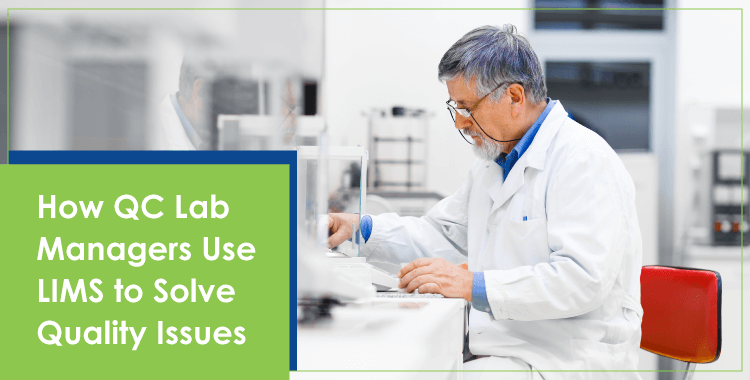
Today, in the rapidly changing lab setting, quality control of LIMS is essential for attaining precise and dependable analytical data. A robust...
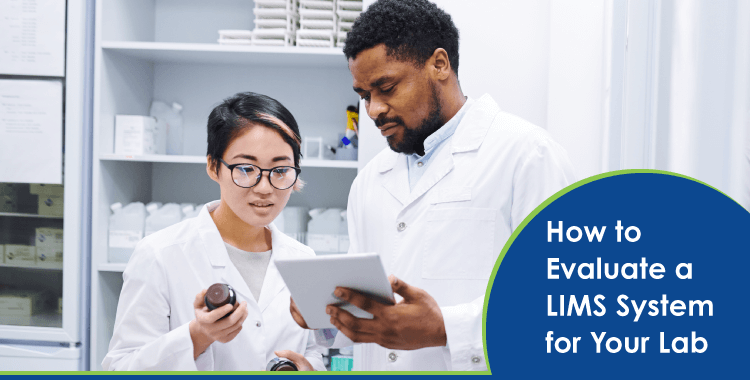
The LIMS evaluation process is a key factor in achieving success, and this guide will provide invaluable guidance to ensure the right decisions are...
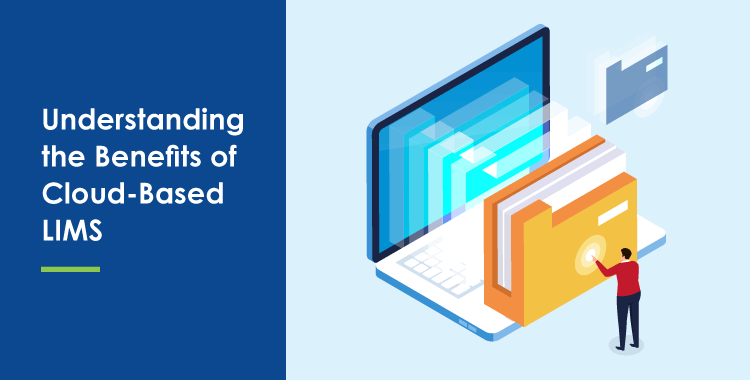
The LIMS market growth continues to gain momentum as laboratories worldwide seek advanced solutions for efficient data management and process...
